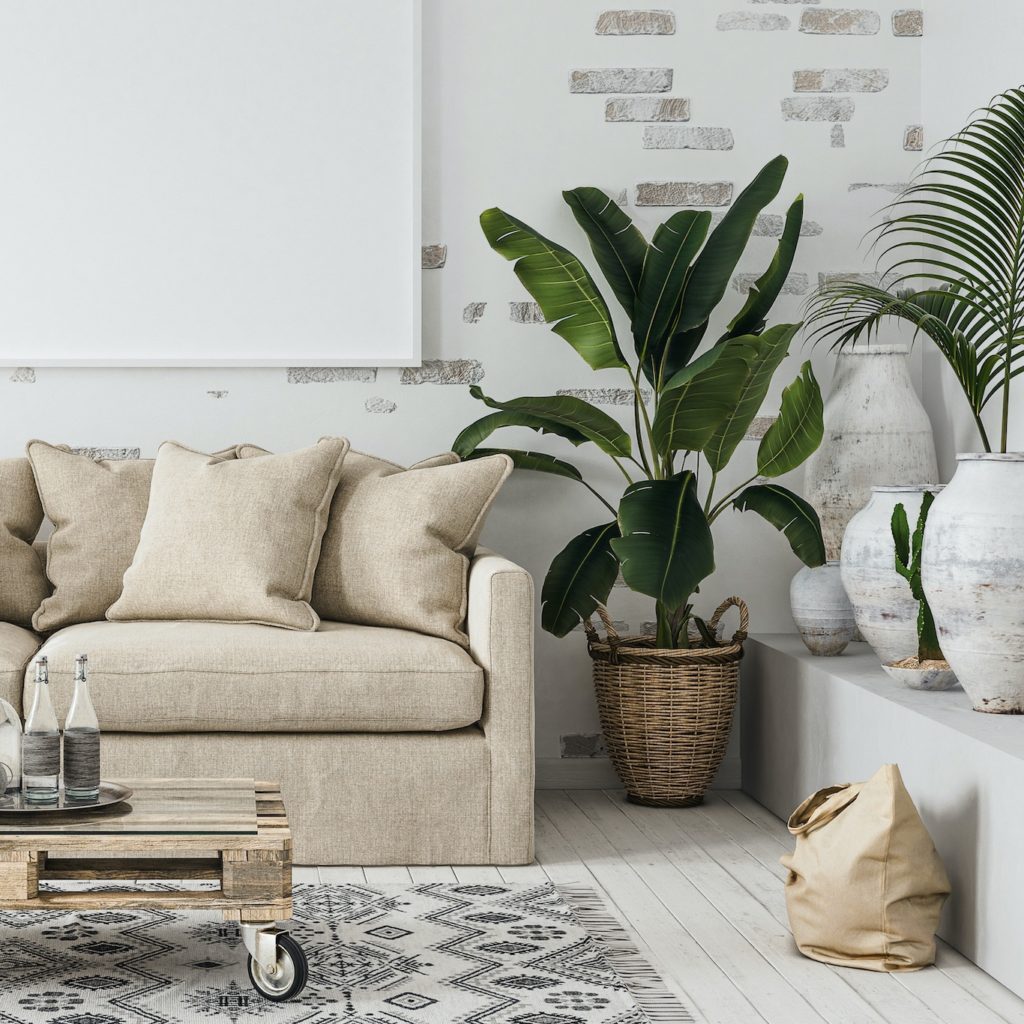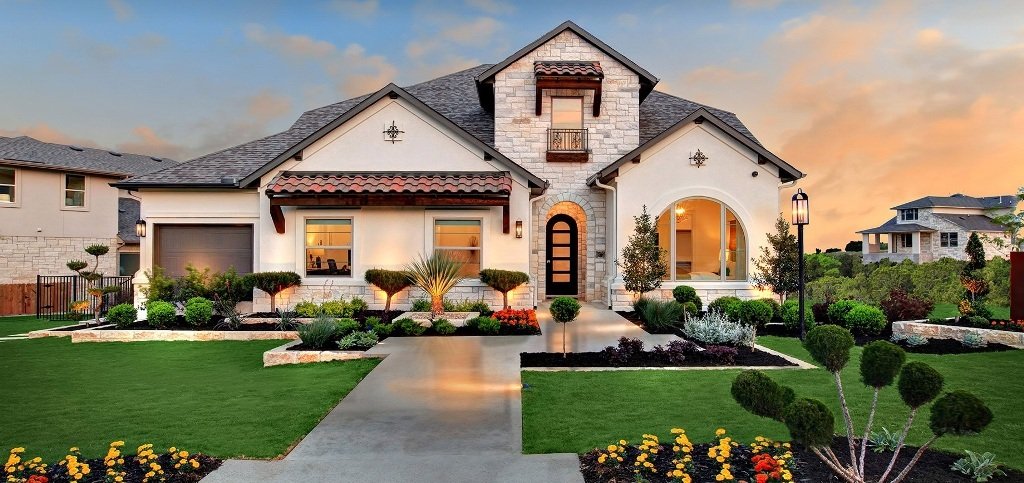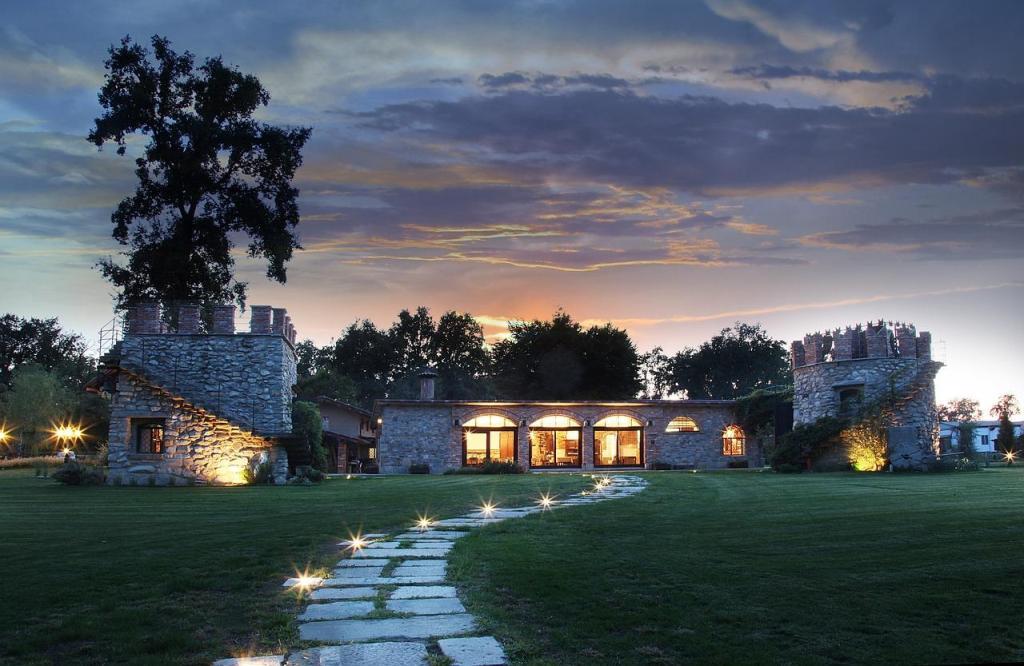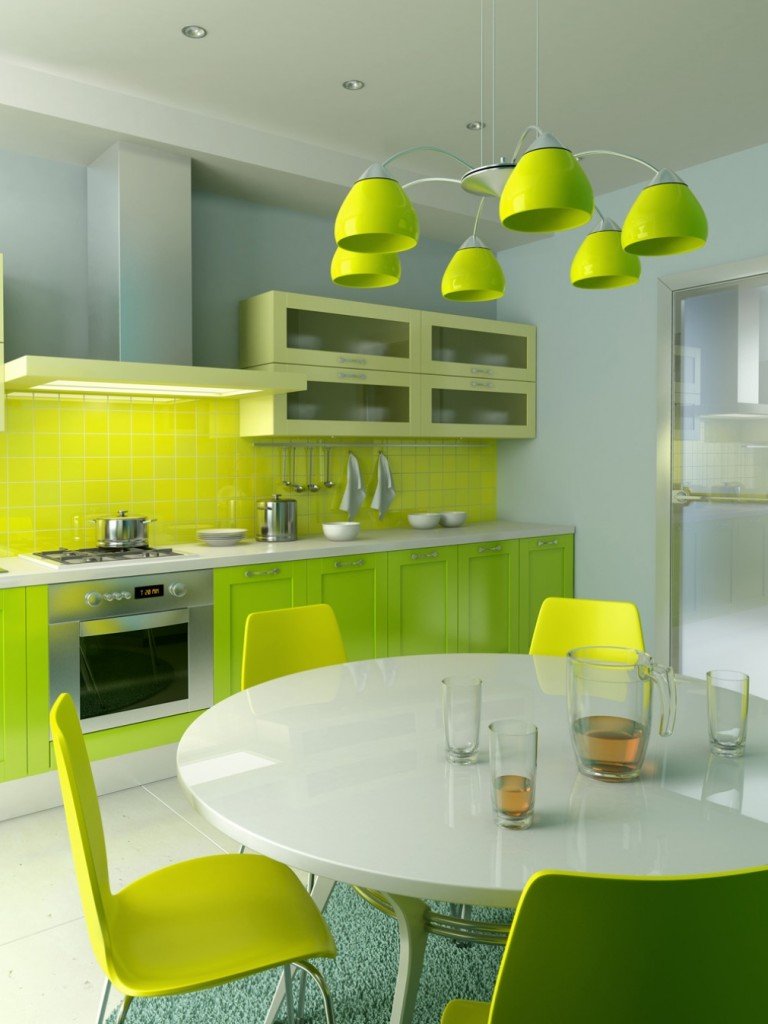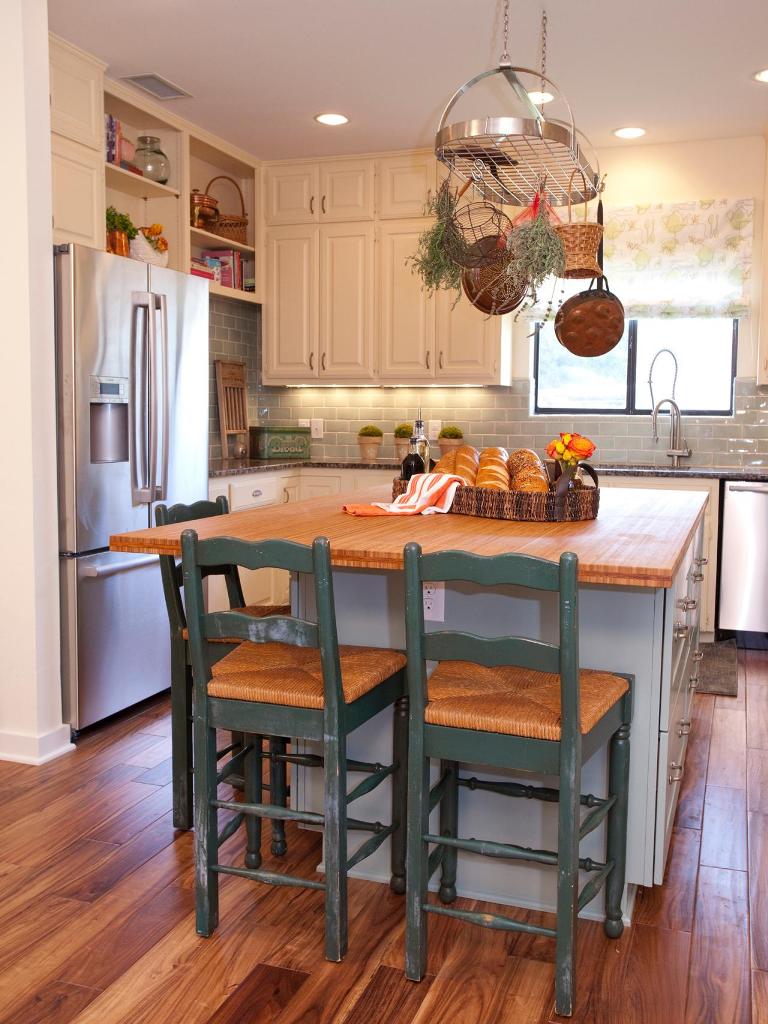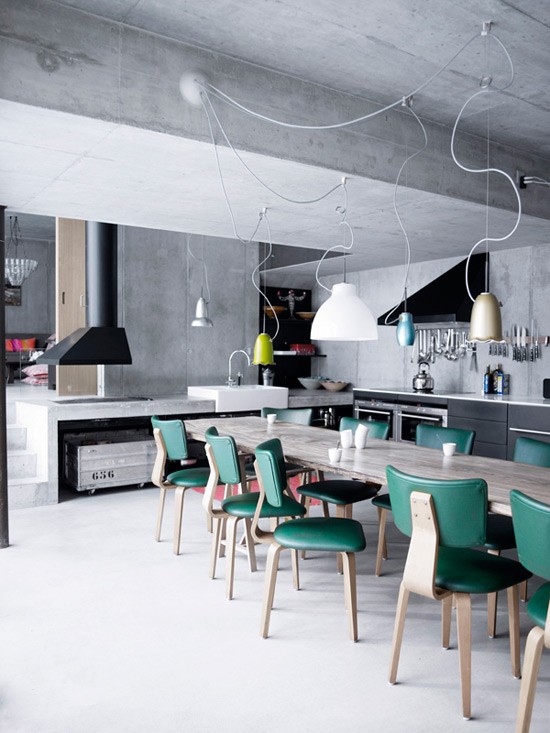Do the plants in your house inevitably end up dying? We make a selection of 20 survivors who will fill your home with green hope. It is not that you are not good at plants, it is that you have not yet found the perfect one for you. In this gallery, we have selected 20 off-road species capable of surviving in the most extreme conditions.
BENEFITS OF HAVING PLANTS AT HOME
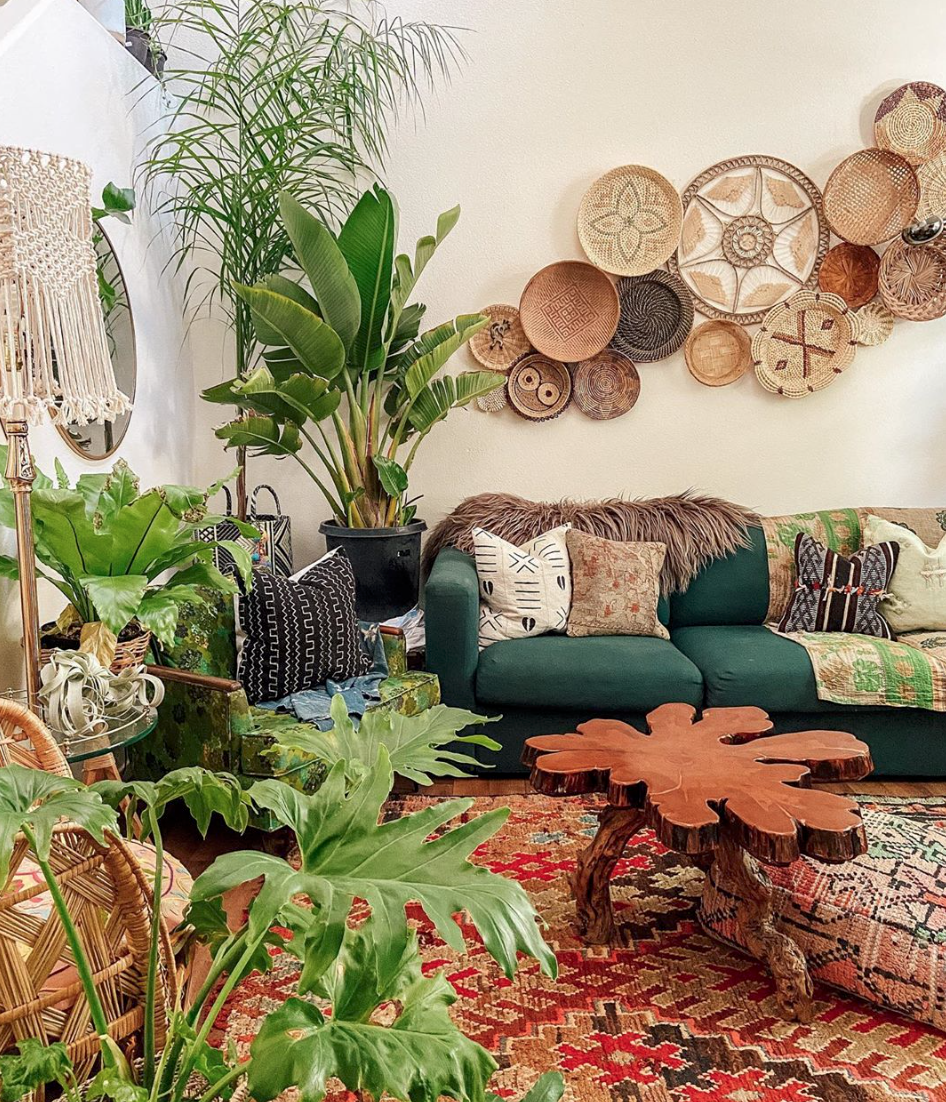
Since we studied plant photosynthesis at school, we have learned that plants are essential for life on the planet due to the amount of oxygen they generate and the amount of CO2 they remove. By this same rule, if the great forests of the Earth are the lung of the life of all animals, on a small scale, if we create green corners in our house, we will benefit from having plants that clean the air in our homes.
- Indoor plants purify the air.
- They have relaxing effects.
- They are sound absorbing.
- They increase the humidity of the air. Essential in the driest climates.
“The positive influence of plants in the air is something that has already been analyzed for a long time and in many studies, highlighting in this line a NASA study from the 80s entitled” NASA Clean Air Study “that recommends the use of plants in the interior of the houses , offices and closed premises, and that it calculated as optimal the use of 15 to 18 plants of average size for a house of 170 square meters. Information from the Spanish Federation of Associations of Producers Exporters of Fruits, Vegetables, Flowers and Live Plants (FEPEX).
Many plants filter harmful substances dispersed in the environment, such as the spatiphyllum (Spatiphyllum), the cheflera (Schefflera) or the parlor palm (Chamaedorea).
Indoor plants also have an effect on our emotions and our mental well-being . Its colors, the different shades of green, create relaxing environments. Having plants and flowers, in addition to decorating any room in the house, improves our mood and is a source of creativity and inspiration. The key is to choose the varieties that best suit your home, place them in a place where they receive a lot of natural light, but not direct sun, away from drafts and, if possible, from heating. Among the most resistant varieties we find the ficus, the Brazilian trunk, the poto and the ferns.
Enjoy now with this selection of 20 indoor plants that are very easy to care for and maintain.
1- CHAMAEDOREA OR PARLOR PALM
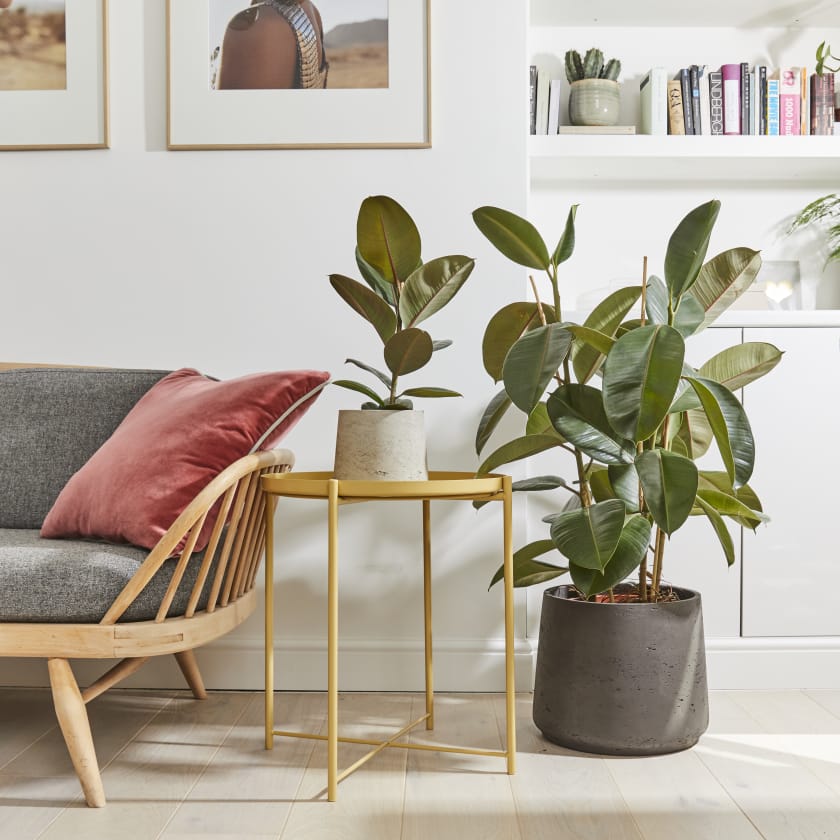
They are plants that do not tolerate drought, and must be sprayed often with a vaporizer to maintain humidity. The Camadorea is excellently resistant to any light condition, although the ideal is to place it in a corner with partial lighting, never direct lighting (since the leaves can turn yellowish).
2- IVY

Does your house not have a lot of natural light? So it is the ideal habitat for ivy. The small specimens are perfect for growing indoors and, with some guides, you can give it the shape you want. It prefers shady and humid places. Water it sparingly and occasionally spray water on its leaves. It tolerates low temperatures very well.
3- ADAM’S RIB

The shape of the Monstera Deliciosa leaves and the little care it requires make this plant the best friend for those who do not have much time and love decoration. Moderate watering and light. Although it supports dry environments very well, it is good to spray it with water from time to time.
4- SANSEVIERIA

Also called sword of Saint George and mother-in-law’s tongue. It is one of the most resistant plants there is and is capable of adapting to any space. It grows well in the shade or in full sun and in very dry environments. It supports from high temperatures to moderate frosts and requires very little watering. Our advice: the less you pay attention to it, the better it will grow.
Ideal for offices!
It is capable of converting CO2 to oxygen during the night, which makes it a perfect ally to continue purifying the work environment when no one is in the office. It is recommended to have 6-8 plants of this species for each person in the office.
5- ASPIDISTRA

This survivor is the quintessential plant of portals and corridors because it can endure perfectly without light. It will be happy in any corner of your house (even in the darkest). Water sparingly and, for optimal growth, spray the leaves once a week, although it is not necessary.
6- POTO

The 90s have returned and poto, their most typical plant (and easy to maintain at home), too. One tip: better not to make compositions with its stems on walls or furniture. The potus does not need much watering, it supports dry environments well and prefers places without direct sun and with moderate temperatures.
7- ARALIA OR POLYSCIA

It is a very undemanding plant, perfect for those who are always in a hurry and spend little time at home. Without the need for direct light, it develops wonderfully in any corner of the house, and with little water it forms and looks bright and healthy. The key is to always keep your soil slightly dry and to achieve a room temperature without major changes.
8- CLIVIA

If you start growing plants at home, Clivia will help you get off to a good start. He likes bright spaces, but without direct sun, and warm. It supports dry environments and prefers moderate watering.
9- FICUS BENJAMINA
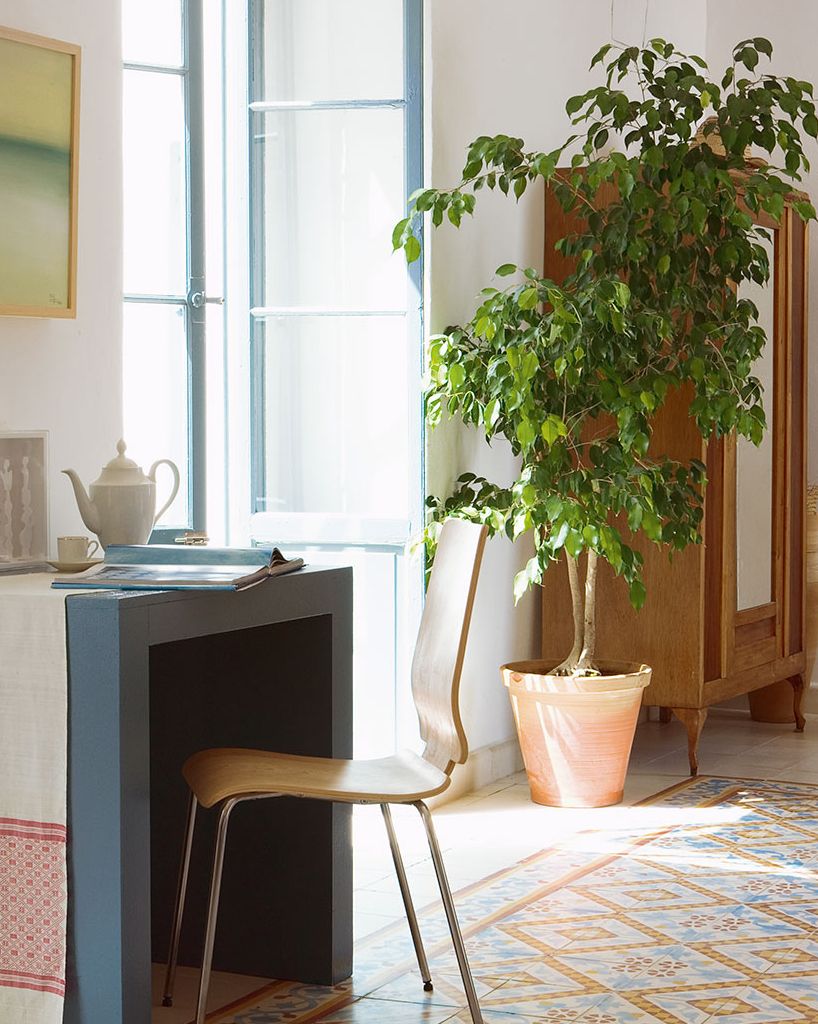
This small tree is perfect to decorate any corner of your home. To get bright and abundant leaves, it is best to place it in a place with plenty of light and water it once a week. Ficus: care, types and tips to decorate your home with this beautiful tree.
10- ALOE VERA

Houseplant, Flowerpot, Terrestrial plant, Aloe, Leaf, Flower, Plant, Xanthorrhoeaceae, Botany, Succulent plant,
In addition to being a very decorative plant, its medicinal and aesthetic properties make it one of the most desirable species to grow at home.
It grows very well outdoors with a Mediterranean climate or indoors with warm light. Water between once a week or two a month. Aloe vera: care, characteristics and watering.
11- SUCCULENTS

Flower, Plant, Food, Succulent plant, Echeveria, Ingredient, Cuisine, Table, Stonecrop family, Dish,
Also known as succulent plants, there is a great variety that will allow you to create very interesting combinations for your home.
Their fleshy leaves and stems store water, so it’s best to water them little and make sure they have good drainage. They will grow up very happy in full sun.
12- CACTUS

Can a list of the hardiest plants be made without including this great classic? Like succulents, there are a wide variety of species and they are all very decorative. As is already known, irrigation should be rather scarce and it is better to place them close to the sun’s rays. Cactus: care, varieties and irrigation.
13- FERN
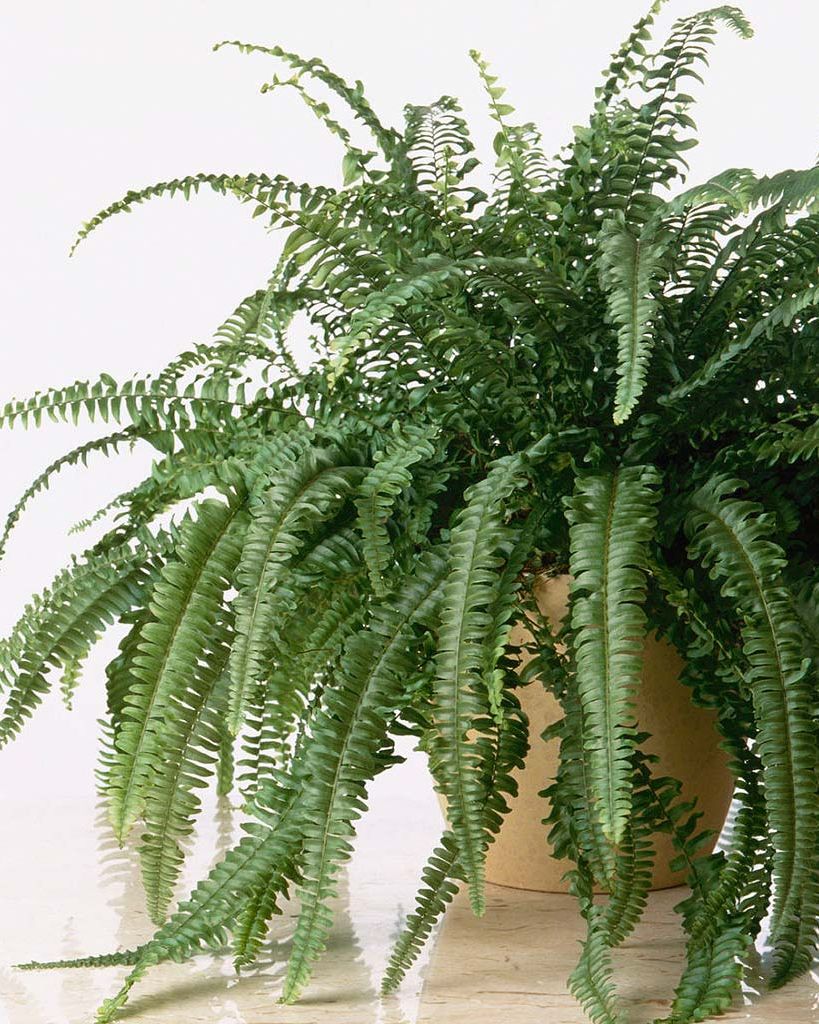
The fern is said to be the oldest plant on earth and its provenance varies depending on the variety. They can be found in tropical regions, equatorial and Mediterranean areas. Ferns: care, maintenance and frequent problems.
14- SPATIPHYLLUM
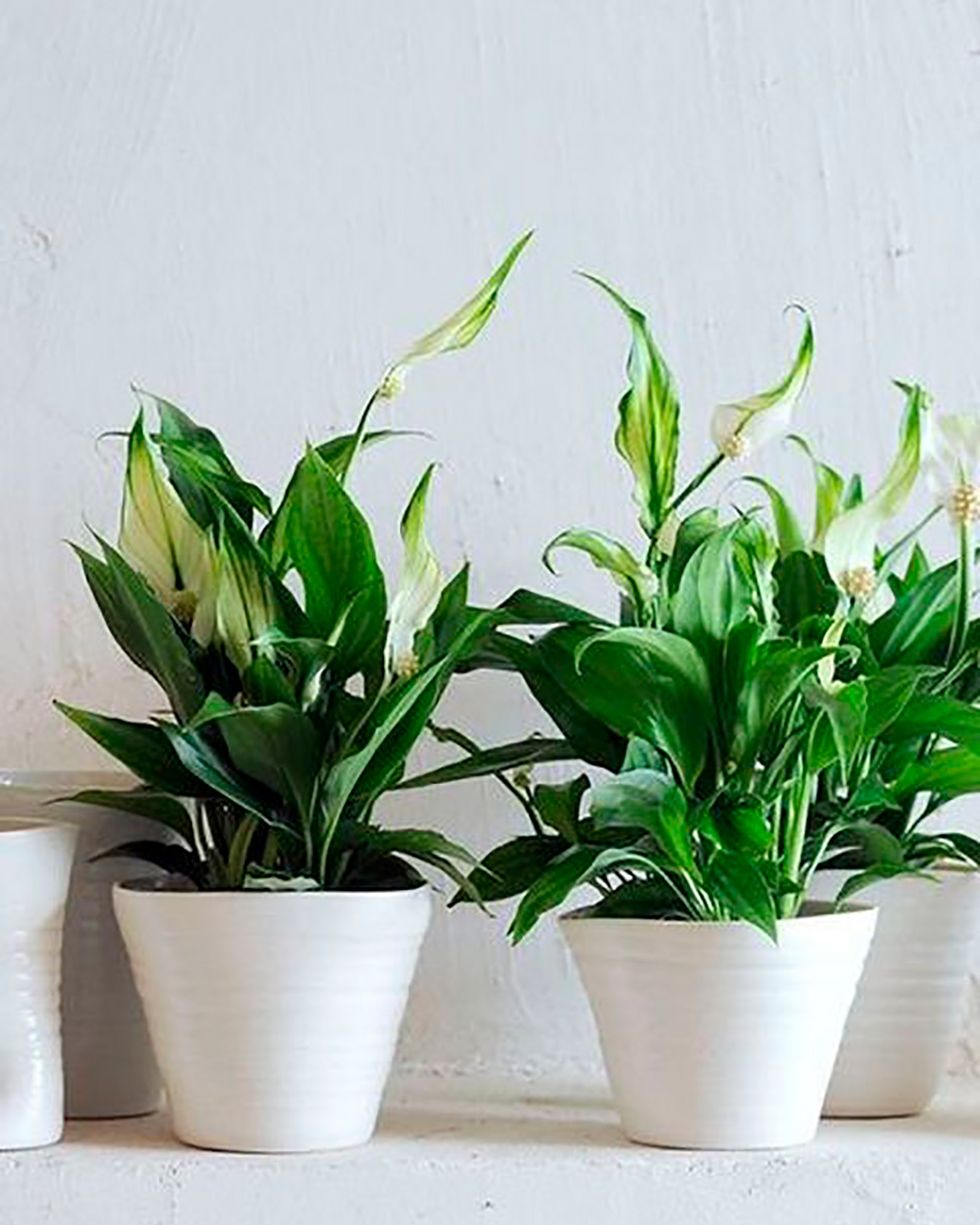
The Peace Lily or Espatifilo, is a beautiful variety that purifies the air of the room where it is located. In addition, it gives off a pleasant aroma, which makes it an excellent natural air freshener. Spatifilo: care and watering.
15- SCHEFFLERA

The schefflera is a very malleable variety that allows to obtain the desired silhouette by pruning leaves and even entire branches, as if it were a bonsai. Irrigation must be regular without flooding the earth. It should be placed in a warm place with natural light, it has no problems with direct sunlight.
16- CROTON
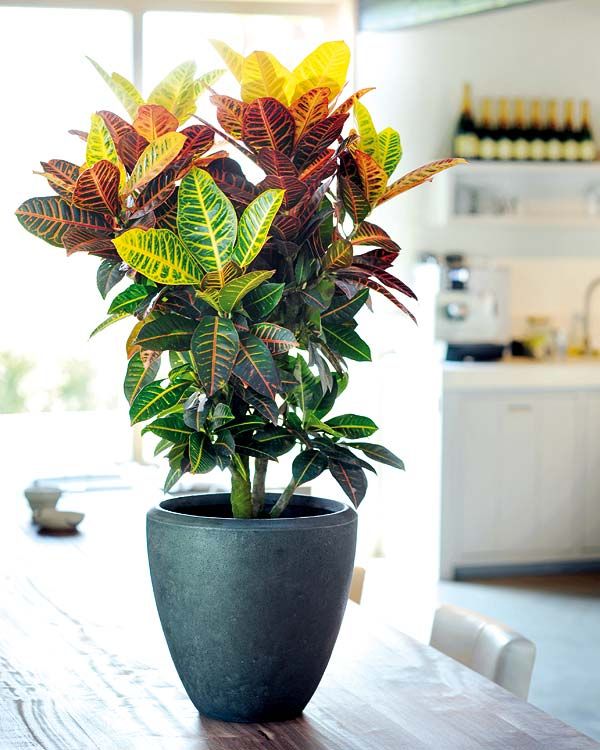
The croton is native to Asia, where it grows wild until it becomes a shrub several meters high. The range of colors and shapes of the leaves is due to the ease it has to cross with other plants. It needs moist soil in summer and spring, but without it being flooded, and substrate in the growing season. Light is essential, without it the leaves would lose their color.
17- ALOE VERA
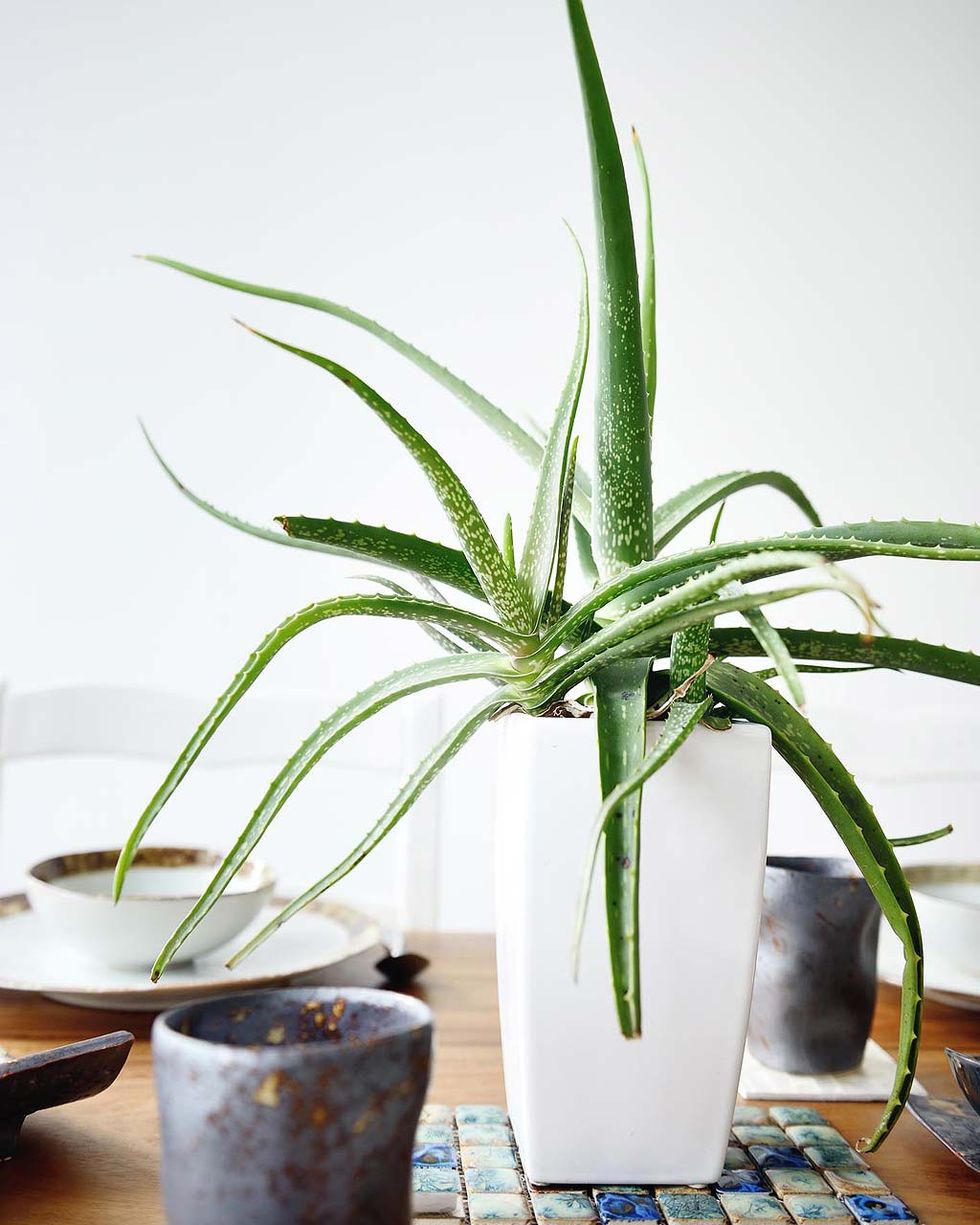
According to the National Institutes of Health, Aloe Vera was known as the “plant of immortality” in Egypt and was used to heal wounds. Today, people often rub it on sunburns or redness to relieve pain. Aloe vera: care, characteristics and watering.
18- ANTHURIUM
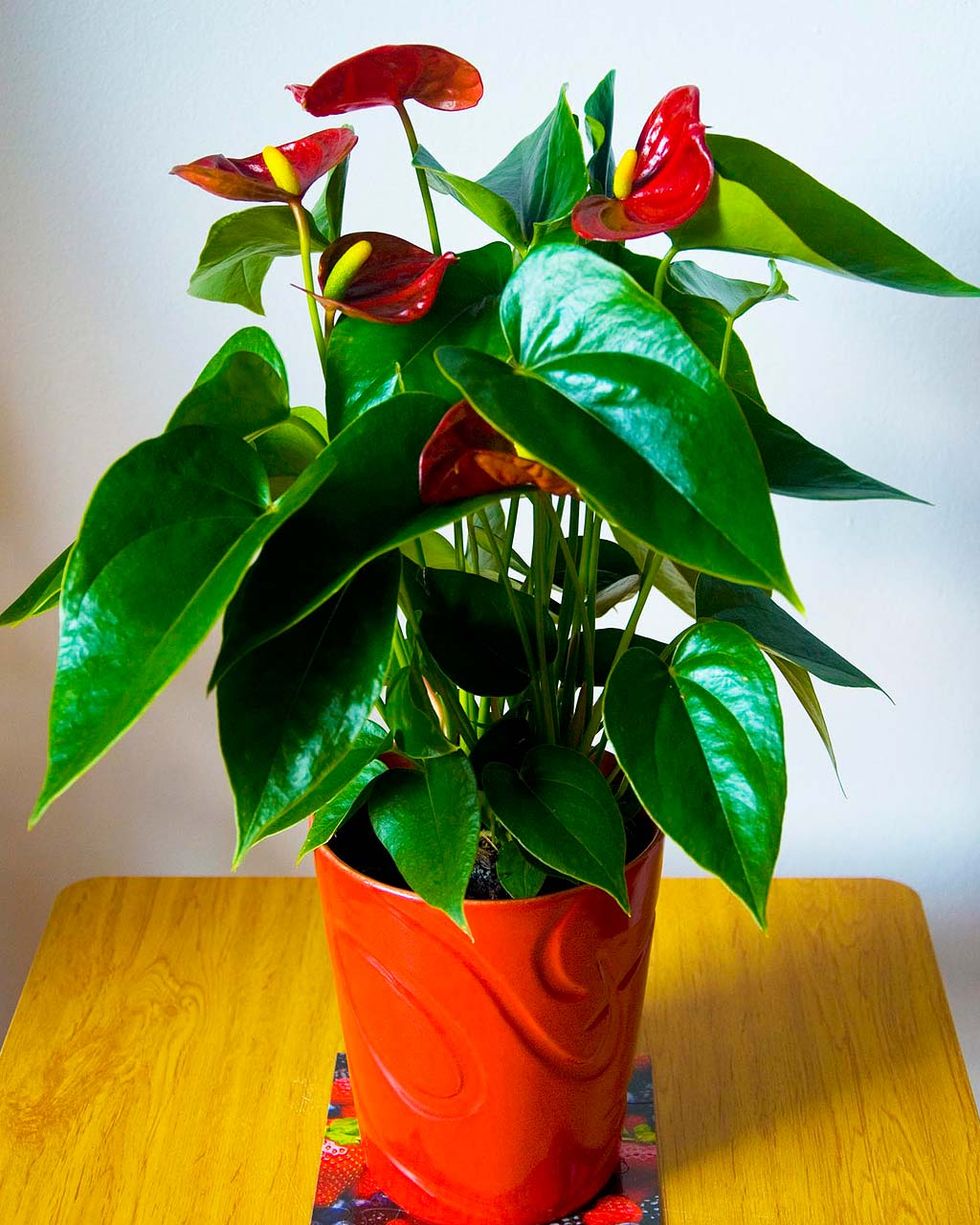
In addition to its symbolism, the beauty of this variety of interiors enriches the environments with a pleasant dose of serenity.
19- RIBBONS
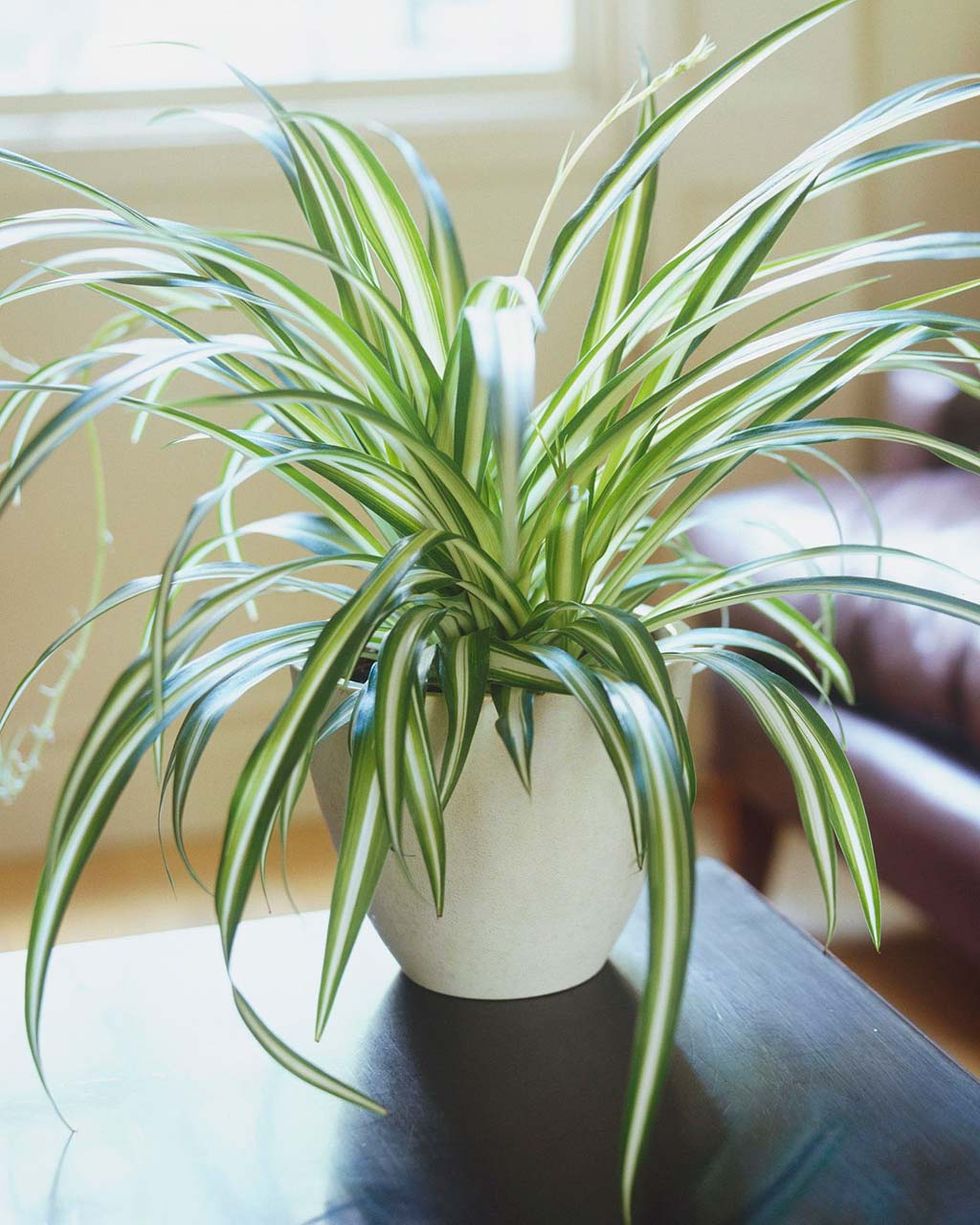
If you sneeze every winter from the dust, you need some ribbons in your life. The leaves absorb allergens (such as dust) and in two days this plant can eliminate up to 90% of toxins in a room. It is also known as Malamadre and Lazo de amor.
20- LUCKY BAMBOO
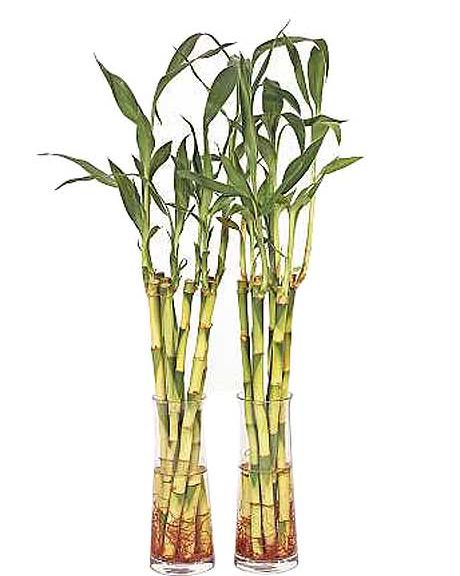
Being a resistant plant we will not run into many problems if we are careful not to go overboard with water and direct sun. Lucky bamboo: fortune, health and good vibes in your home.

